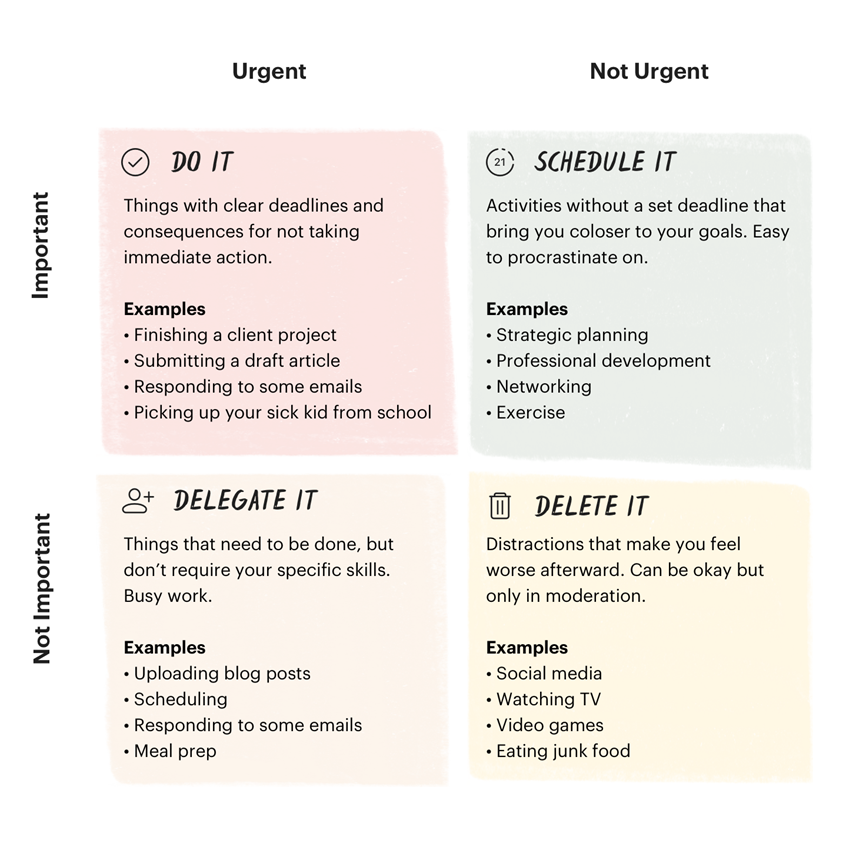As a marketing manager, what skills do you need to ace your job? What sets you apart from a regular marketing manager? In this article, we’ll discuss top project/team management skills that would make you a superb marketing manager.
A marketing manager is a jack of all trades. Your area of responsibilities starts from having a good understanding of the company’s products and its business model and ends with attracting its target audience and retaining them. What falls between these two distant pillars (e.g. market research, data analysis, SEO, social media management, strategic advertising, content marketing, public relations, etc.) each demands a dedicated team of experts and it is your job to lay down the plan for them.
The set of skills that could help you pull off your job as a marketing manager (and keep your sanity at the same time) are more or less in the realm of leadership. You spend most of your time managing your team, analyzing their work and making sure that all the little pieces fall in the right place. It’s an extremely collaborative job.
Below are some of the top skills you need to have to take your marketing management career to the next level:
1. Prioritization
Rather than opting for a “do it all” approach, a good marketing manager excels in prioritizing tasks according to company needs. In this sense, a marketing manager should have a good understanding of the company’s strategic plans including product development plans. Some questions that could be asked are:
- What is the company’s overall growth plan?
- What are the company’s previous successes and failures? In what areas do they need to improve?
- What marketing channels are top performers and what channels need a better strategy?
- What are their top selling points and what puts customers down?
The bird’s eye view of a good marketing manager can put all these pieces together and prioritize marketing tasks in a way that fuels growth.
To gain this understanding, a marketing manager is privy to other departments. They have frequent meetings with upper level managers and directors to make sure they’re updated with the latest plans of the company. They have good relationships with other departments such as sales (especially sales) and customer service to make sure they have a good understanding of customers’ journey and the issues they might experience along the way.
The Eisenhower Matrix is a popular way to prioritize your tasks. Dwight Eisenhower, the 34th president of the US, suggested that tasks should be categorized into four groups according to their importance and urgency:
- Important and Urgent – highest priority
- Important but Not Urgent
- Not Important but Urgent
- Not important and Not Urgent – lowest priority
Each of these groups could be considered a quadrant in the modern matrix created for them. Categorize all of your tasks according to these quadrants and use resource scheduling tools to assign them to the right people in your team.

2. Time management
Time management is closely associated with prioritization. As a marketing manager, it’s essential to know how to spend your own time as well as the time assigned for each task or project. Team members look up to you to know how they should spend their work time.
To manage your time, you can take advantage of time management techniques such as Pomodoro. Pomodoro technique was invented by Francesco Cirillo in the late 1980s (he was a college student back then).
Pomodoro is Italian for tomato, so called because of the tomato-like timer that’s used in this technique. Each Pomodoro is 25 minutes of focused work followed by 5 minutes of rest. For this you set (your tomato-like) timer for 25 minutes during which you focus on your task. After the timer rings, you take a 5-minute rest, and repeat the process afterwards. Completing a task might take four Pomodoros, that is two hours. After each four Pomodoros, you need to take a rest for 15-20 rest.

The idea is to take hold of your time by organizing it into successive Pomodoros. Each task you’re planning to do during the day should be assigned a certain number of Pomodoros to be completed. You track the number of Pomodoros you use for each task to have a clear understanding of the actual time it takes to complete the task as well as find potential to reduce that time. The basics of the Pomodoro technique are quite simple.
- You organize the tasks you need to accomplish in a day in a to-do-today list.
- You assign a certain number of Pomodoros to your tasks
- You start your work day by completing Pomodoros after Pomodoros. Use an actual timer or RoundPie to keep track of the time.
- Pomodoros are indivisible, that is you can’t pause them and continue them afterwards. So you need to avoid any distractions (internal or external). If you need to break a Pomodoro, it becomes void -- you need to start a new one.
- At the end of the day, it’s important to reflect on your work and all the distractions that come along. You need to master the technique in order to stay focused.
Although the Pomodoro technique seems simple enough at the beginner level, for a more advanced understanding of it (how to deal with distractions, how to apply the technique for teamwork, etc.) you need to read the actual book authored by Cirillo.
3. Communication skills
Nothing is more important in team management than effective communication. All critical teamwork tasks such as setting goals and milestones, getting feedback on project progress, receiving information from a client, conducting reviews on the work, or even some simple tasks such as knowing where a file is stored, demand a good level of communication inside and outside of your team.
As a marketing manager, you need to make sure everybody in your team understands the project and its objectives and milestones, their responsibility as a member of the team, and how they should seek help when they need some. You should also be able to communicate the outcome of your team’s efforts to upper-level managers and directors.
Experts recommend having a communication plan to help the employees through. In a communication plan, you need to define what should be communicated to who, and how and when it should be communicated.
Make a list of people involved in the project along with their contact information. Make sure people understand the goals for communication and what they should deliver. You should also define communication methods (phone, text, video, etc.) and how often it should be done. Choose a suitable collaboration software and encourage team members to communicate through that software. This makes it easier for you to manage the communications and increase productivity. It’s also a good idea to invest in training programs. A good learning management platform can help you a lot in designing training programs to teach effective communication team members.

4. Creative skills
Marketing managers are responsible for designing and conducting creative campaigns. The fact that I have mentioned creative skills as the last item in my list does not undermine its importance.
A creative social media campaign can go viral and make the fortune of the company. Think Dove’s Real Beauty campaign with its viral YouTube video which produced 114 million views just in the first month, or the amyotrophic lateral sclerosis (ALS) Association which started the ice bucket challenge and raised $115 million to help cure the disease.
The inner workings of a creative mind might seem to be a mystery: a creative work defies any set of rules or boundaries by nature. But it makes sense to try to unravel the framework or the processes that lead to creativity.
This is how Andrew Ng, founder of Google Brain, co-founder of Coursera, former VP & Chief Scientist at Baidu and the founder of Landing AI puts it:
“I believe that the ability to innovate and to be creative are teachable processes. There are ways by which people can systematically innovate or systematically become creative. One thing I’ve been doing at Baidu is running a workshop on the strategy of innovation. The idea is that innovation is not these random unpredictable acts of genius, but that instead one can be very systematic in creating things that have never been created before.
In my own life, I found that whenever I wasn’t sure what to do next, I would go and learn a lot, read a lot, talk to experts. I don’t know how the human brain works but it’s almost magical: when you read enough or talk to enough experts when you have enough inputs, new ideas start appearing. This seems to happen for a lot of people that I know.
When you become sufficiently expert in the state of the art, you stop picking ideas at random. You are thoughtful in how to select ideas, and how to combine ideas. You are thoughtful about when you should be generating many ideas versus pruning down ideas.”
Final words
Like any other management level careers, a marketing manager is responsible for the work of a team. Bigger companies might have separate roles for marketing such as SEO manager, content marketing manager, social media marketing manager, etc, and this might make your work more focused and technical, but generally as a manager you need to have great soft skills . Among the top soft skills you need to master are prioritizing and planning, time management, communication, and creativity.
About the author:
Mostafa Dastras has written for some companies such as HubSpot, WordStream, SmartInsights, LeadPages and MarketingProfs. Over the past years his clients have primarily relied on him for increasing organic traffic and generating leads through outreach campaigns. Visit his blog, LiveaBusinessLife, or connect with him on LinkedIn.
What would you like to know and what would be the best way to share this information to you? What is the best tips & tricks, what workaround do you use? We'd really appreciate your insight on these ones to make our integrations better, more productive and much more efficient. Comments, tweets are always welcome.